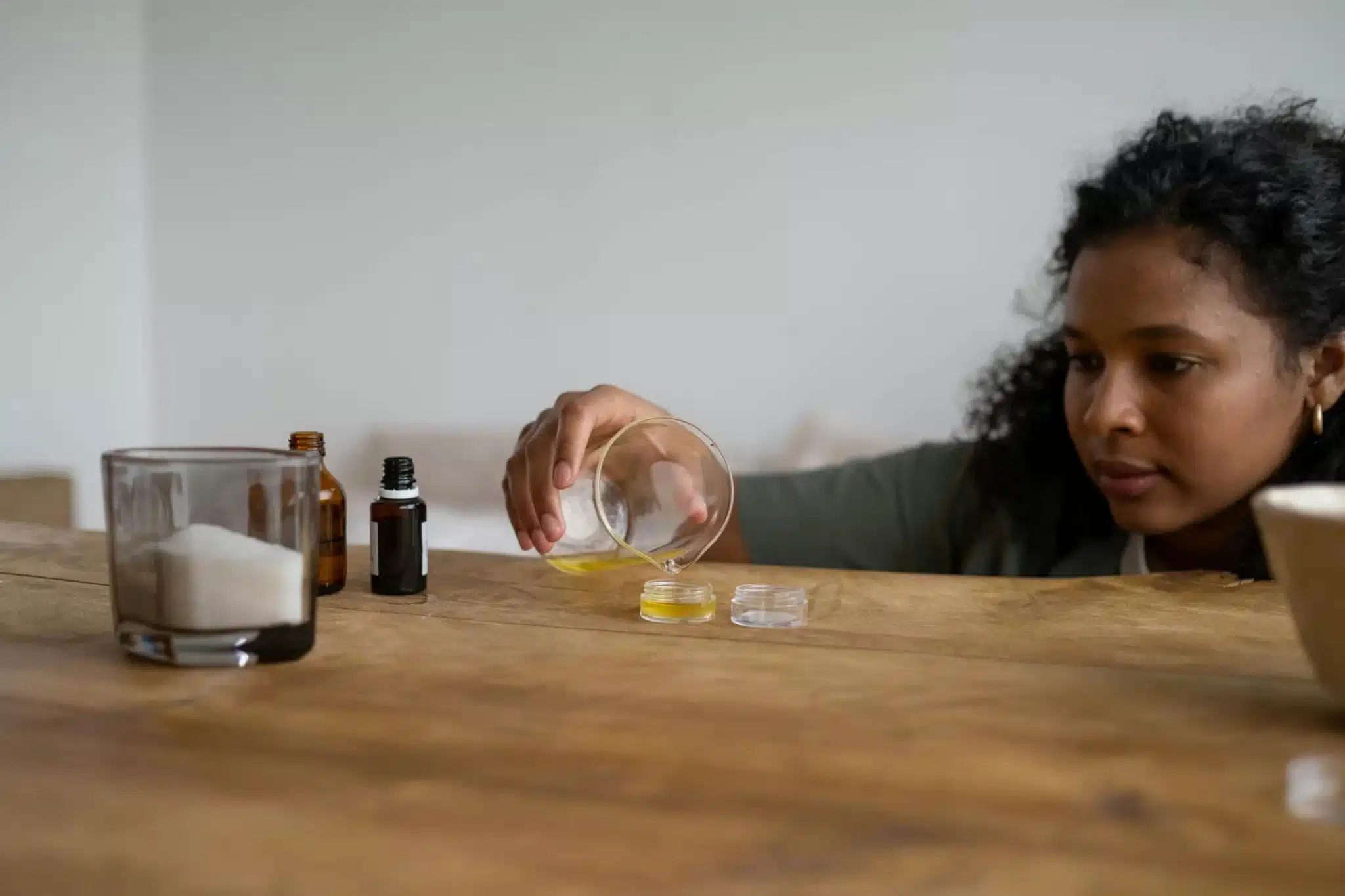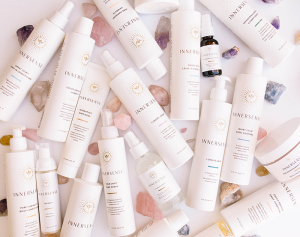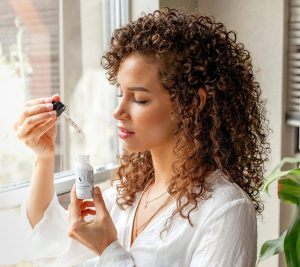You found our guide to Identifying and Understanding the Ingredients in Your Beauty Routine!
If you’ve ever scanned the label on your favorite serum or foundation and spotted the tongue-twister “Decamethylcyclopentasiloxane,” you’re not alone. Understanding what’s in your beauty routine is vital—especially when words like Decamethylcyclopentasiloxane show up in everything from primer to dry shampoo. For people who want to trust what they’re putting on their bodies, ingredient transparency matters more than ever.
Interested in non-toxic beauty? Check out 25 Best Non-Toxic Makeup Brands.
This list includes:
- What is D5?
- How to identify D5
- Environmental impact of silicone
- Non-toxic beauty products
- Alternatives to silicone skincare products
Let’s get to it!
Identifying Ingredients in Your Beauty Routine: What The Heck is Decamethylcyclopentasiloxane?
What is Decamethylcyclopentasiloxane?
Decamethylcyclopentasiloxane, often abbreviated as D5, is a type of silicone. It’s used widely in personal care products to create that silky, smooth texture so many of us associate with luxury skincare and cosmetics. D5 is a volatile, cyclic compound that evaporates quickly, leaving behind a soft, lightweight feel without greasiness. It acts as a carrier for other ingredients, helping spread products evenly over the skin or hair.
You’ll find it in facial creams, body lotions, sunscreens, deodorants, hair serums, and even long-wear makeup. It lends that gliding sensation, making application effortless. It’s favored not only for aesthetics but also for performance.
Why Is It in So Many Products?
D5 is prized by formulators for its unique sensory profile. It delivers slip without the heavy, oily finish many natural oils produce. In humid cities like New York, where beauty has to hold up against heat, subway air, and long days, a lightweight formulation is essential.
It also plays a role in enhancing product longevity and wearability. In foundations, it helps pigment sit evenly on the skin. In hair products, it reduces frizz and enhances shine without buildup.
This ingredient is synthetically derived, highly stable, and versatile across beauty categories.
Is Decamethylcyclopentasiloxane Safe to Use?
The safety of D5 has been evaluated by various regulatory bodies. The Scientific Committee on Consumer Safety (SCCS) in the EU has reviewed its use in rinse-off and leave-on products. In rinse-off formulations, it’s generally recognized as safe. For leave-on products, concerns have emerged due to its potential for bioaccumulation and persistence in the environment.
However, from a user health perspective, D5 is considered low risk in the concentrations typically found in cosmetics. It is non-irritating, non-sensitizing, and unlikely to clog pores, making it suitable for most skin types—including sensitive and acne-prone.
Learn more about the Safety of Decamethylcyclopentasiloxane in Beauty Products.
Environmental Considerations
Here’s where things become complex. While D5 may be safe for skin contact, its environmental impact raises questions. It doesn’t degrade easily and can accumulate in aquatic ecosystems. Because of this, some regions have restricted or proposed limits on its use, particularly in rinse-off products.
For the clean beauty consumer, this becomes a point of personal choice. If environmental sustainability is core to your beauty values, you may want to seek alternatives or brands that prioritize biodegradable formulations.
Alternatives to D5
For those curating a clean or green beauty routine, there are emerging silicone alternatives gaining traction. Plant-based emollients such as hemisqualane (derived from sugarcane), Caprylyl Methicone, and Coco-Caprylate are growing in popularity. These ingredients mimic the luxurious feel of silicones without the environmental drawbacks.
Luxury indie brands are beginning to formulate without D5, focusing instead on sustainability, efficacy, and sensorial experience. Expect to see more “silicone-free” labels, especially in boutique skincare stores and wellness-forward beauty retailers.
Check out Sephora’s Silicone-free Foundations!
How to Spot It on Labels
Decamethylcyclopentasiloxane is usually listed under its full name, though some labels may include its shorthand, D5. It’s often found near the top of ingredient lists in sprays, serums, and long-wear makeup—especially products promising a matte or velvety finish.
Take a closer look at that luminous primer or weightless hair mist. If the silky feel seems too good to be true, D5 might be why.
Final Thoughts
Knowing what’s inside your favorite beauty staples empowers you to make intentional choices. Decamethylcyclopentasiloxane delivers that ultra-light, polished finish people crave—but it also comes with environmental questions worth considering. Whether you choose to embrace or avoid it, being informed is the first step in aligning your beauty routine with your wellness goals and lifestyle.
Enjoyed this article? Next, check out Top 15 Nontoxic Shampoo Products.






